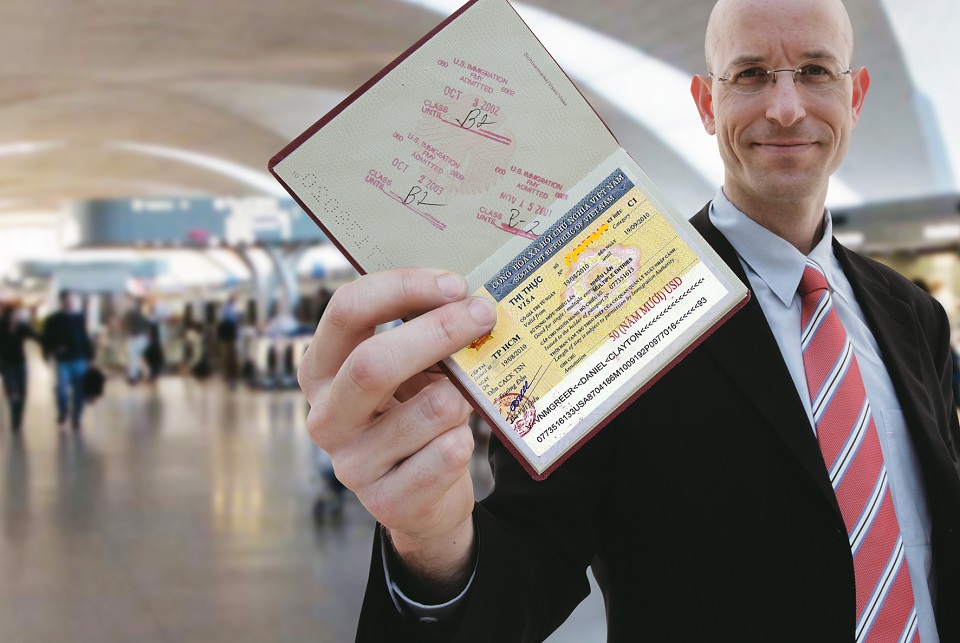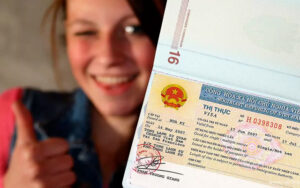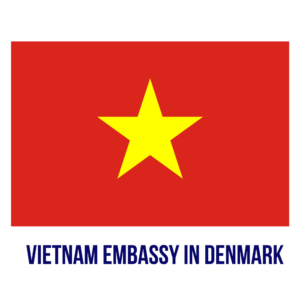Vietnam Business Investment Visa for Danish Entrepreneurs opens doors to one of Asia’s most dynamic economies. As Denmark seeks global partnerships in renewable energy, tech innovation, and sustainable manufacturing, Vietnam’s strategic position and business-friendly policies create unparalleled opportunities. This guide demystifies visa procedures while exploring why Danish investors are increasingly choosing Vietnam over traditional Asian hubs.
Table of Contents
Introduction: Vietnam’s Appeal for Danish Entrepreneurs

Vietnam’s transformation from an agrarian economy to a manufacturing and digital powerhouse makes it a magnet for Danish business leaders. The Vietnam Business Investment Visa for Danish Entrepreneurs serves as the golden ticket to tap into this growth, but understanding the country’s macroeconomic landscape is equally vital.
Vietnam’s Economic Renaissance and Danish Synergies
Vietnam’s 7% annual GDP growth consistently outperforms regional peers, creating fertile ground for Danish enterprises. Copenhagen’s expertise in wind energy aligns perfectly with Vietnam’s commitment to renewable sources, targeting 30% clean energy by 2030. The EVFTA further sweetens the deal, eliminating 99% of tariffs on Danish exports like pharmaceuticals and machinery.
Cultural compatibility adds another layer of appeal. Vietnam’s workforce combines technical proficiency with Scandinavian-style pragmatism, particularly in engineering and IT sectors. Danish companies like Vestas and LEGO have already established successful ventures, proving the model’s viability.
Strategic Advantages Over Neighboring Markets
While Thailand and Malaysia traditionally attracted Nordic investors, Vietnam’s lower operational costs and younger demographic (median age 32) offer distinct edges. Port infrastructure in Hai Phong and Da Nang rivals Singapore’s at 40% lower logistics costs, a critical factor for Denmark’s export-driven businesses.
Government incentives specifically target high-value sectors where Denmark excels:
- Green tech development zones with 10-year tax holidays
- Special economic corridors linking industrial clusters to deep-sea ports
- IP protection frameworks strengthened under EVFTA provisions
Navigating Cultural and Regulatory Nuances
Success requires more than just securing a Vietnam Business Investment Visa for Danish Entrepreneurs. Local partnerships mitigate bureaucratic hurdles—Vietnamese joint venture partners can accelerate licensing by 3-6 months compared to wholly foreign-owned entities. Understanding guanxi (relationship-based business culture) proves as crucial as mastering visa paperwork.
Understanding the Vietnam Business Investment Visa

The DN Visa serves as the primary gateway, but its nuances often confuse first-time applicants. Unlike tourist visas, this category ties legal residency to active business operations, demanding meticulous documentation.
DN Visa vs. Other Business Visa Categories
Many conflate the DN Visa with LD (labor) or DT (investor) visas. Key differentiators include:
- DN Visa: For day-to-day business operations, requires work permit sponsorship
- DT Visa: For passive investors with capital over $130,000, no work permit needed
- LV Visa: For intra-company transfers under specific FTAs
Danish entrepreneurs often combine DN and DT visas—using DT for initial setup, then switching to DN for hands-on management. This hybrid approach maximizes flexibility during market entry.
Validity Periods and Extension Strategies
Standard DN visas grant 12-month validity, but savvy applicants request multi-year terms upfront by:
- Demonstrating $50,000+ capital injection
- Securing provincial People’s Committee endorsements
- Linking visa duration to project phases in the IRC
Extensions require proof of tax compliance and operational continuity. Some Danish founders use “visa runs” to neighboring countries as stopgaps, but immigration reforms are cracking down on this practice.
Hidden Compliance Pitfalls to Avoid
Common oversights that derail applications:
- Notarization requirements differ for Danish vs. Vietnamese documents
- Health checks must use approved clinics (Ho Chi Minh City’s Family Medical Practice is popular)
- Work permit exemptions don’t apply to retail or education sectors
Engaging a Hanoi-based immigration specialist (rather than southern firms) proves advantageous due to closer government connections.
Eligibility Requirements for Danish Applicants

Vietnam’s visa policies seem straightforward until encountering real-world scenarios. Danish entrepreneurs must navigate both written rules and unwritten expectations.
Capital Thresholds and Investment Structures
While no minimum investment exists for DN visas, practical realities emerge:
- Wholly-owned LLCs: $10,000 minimum charter capital expected in tech, $50,000+ for manufacturing
- Joint Ventures: Local partners may demand 30-49% equity for market access
- Branch Offices: Only viable for firms with 5+ years international operations
Creative solutions like using Singaporean holding companies can optimize tax efficiency while meeting Vietnamese requirements.
Work Permit Exemptions and Loopholes
Danish nationals benefit from EVFTA’s “Contractual Service Suppliers” clause, allowing 90-day work stints without permits. However, this excludes:
- Equity-based management roles
- Revenue-generating activities
- Repeated back-to-back entries
The “Board Member” loophole lets investors obtain 2-year visas without work permits if they hold 20%+ company shares—a tactic increasingly scrutinized by authorities.
Document Authentication Challenges
Vietnam’s “legalization” process frustrates many Danes:
- Notarize documents in Denmark
- Affix Apostille through Danish Foreign Ministry
- Translate at sworn Vietnamese translators
- Re-notarize translations locally
Pro tip: The Danish Chamber of Commerce in Vietnam maintains a list of pre-approved translators to avoid rejection over formatting issues.
Application Process and Required Documentation
A phased approach prevents last-minute scrambles. Seasoned applicants begin preparations 6-8 months before intended relocation.
Phase 1: Pre-Application Groundwork
Critical behind-the-scenes steps:
- Business Premises: Leasing agreements must specify “foreign enterprise use” to qualify
- Banking: Charter capital must be deposited in blocked accounts at Vietcombank or BIDV
- Health Insurance: Minimum $10,000 coverage from approved providers like Bao Viet
Danish SMEs often overlook the “Labor Demand Report”—a document proving no qualified Vietnamese candidates exist for the role. This requires job postings on government portals for 30+ days.
Phase 2: Core Documentation
The make-or-break file includes:
- Passport copies with 18+ months validity
- Criminal record check (Politiattest) not older than 6 months
- University diplomas proving managerial qualifications
- Sponsorship letter on company letterhead with red seal
Digital nomads beware: Vietnam rejects online degree verifications. Original diplomas must be presented at consular offices.
Phase 3: Submission Tactics
Application channels dramatically affect processing times:
- In-Country Applications: 15 working days via Department of Labor
- Embassy Filings: 30+ days at Hanoi Embassy in Copenhagen
- Premium Services: 5-day processing for $500 extra at HCMC Immigration
Recent cases show Danish applications submitted through Da Nang’s new Economic Zone Office receive faster approvals than traditional Hanoi routes.
Benefits and Obligations under the Business Investment Visa
Beyond residency rights, the DN Visa unlocks strategic advantages—and compliance burdens—unique to Vietnam’s business environment.
Family Inclusion and Lifestyle Perks
DN Visa holders can sponsor:
- Spouses for dependent visas (valid for same duration)
- Children under 18 for education visas
- Domestic helpers under strict conditions
International schools like European International School Hanoi offer Danish-language support, easing family transitions.
Tax Optimization Strategies
Vietnam’s territorial tax system benefits Danish entrepreneurs:
- Foreign-sourced income remains untaxed if not remitted locally
- 20% corporate tax rate reduces to 10% in prioritized sectors
- EVFTA eliminates withholding taxes on royalty payments
However, Vietnam’s tax residency rules (183+ days/year) can trigger global income reporting—a pitfall for serial entrepreneurs.
Compliance Timelines and Penalties
Strict annual obligations include:
- Financial audits by licensed firms (required for all foreign entities)
- Work permit renewals 30 days before expiration
- Quarterly foreign worker headcount reporting
Fines for non-compliance range from $500 for late filings to $5,000+ for unauthorized work activities.
Challenges and Opportunities for Danish Businesses in Vietnam
Even with proper visas, operational realities present both hurdles and windfalls for Danish investors.
Sector-Specific Regulatory Hurdles
Not all industries welcome foreign participation:
- Retail: Requires 30+ local employees per store
- Education: Must partner with state-owned universities
- Agriculture: Land lease terms capped at 50 years
Yet green energy projects enjoy fast-tracked approvals—Denmark’s Ørsted secured offshore wind permits in 11 months versus the typical 24-month process.
Cultural Operational Challenges
Danish directness sometimes clashes with Vietnamese hierarchical norms:
- Decision-making flows top-down, delaying middle-management approvals
- “Face” preservation complicates contract renegotiations
- Gift-giving customs border on FCPA violation risks
Successful firms hire bilingual Danish-Vietnamese operations managers as cultural interpreters.
Emerging Opportunities in Secondary Cities
While Ho Chi Minh City attracts most foreigners, hidden gems emerge:
- Can Tho: Agro-tech hub with Mekong Delta access
- Quy Nhon: Coastal smart city projects needing Nordic sustainability tech
- Hai Phong: Robotics manufacturing corridor
Vietnam’s new Regional Innovation Index prioritizes these areas with additional tax holidays.
Conclusion
The Vietnam Business Investment Visa for Danish Entrepreneurs represents more than bureaucratic paperwork—it’s a strategic tool unlocking Southeast Asia’s most promising market. As Vietnam pivots toward high-tech and sustainable development, Danish competencies in cleantech, maritime industries, and precision manufacturing position them uniquely for success.
Those willing to navigate the visa process’s complexities gain first-mover advantage in a market projected to become the world’s 20th largest economy by 2030. With proper preparation and local partnerships, Danish businesses can transform Vietnam’s challenges into their competitive edge, building profitable ventures that bridge Nordic innovation with Vietnamese dynamism.
`






